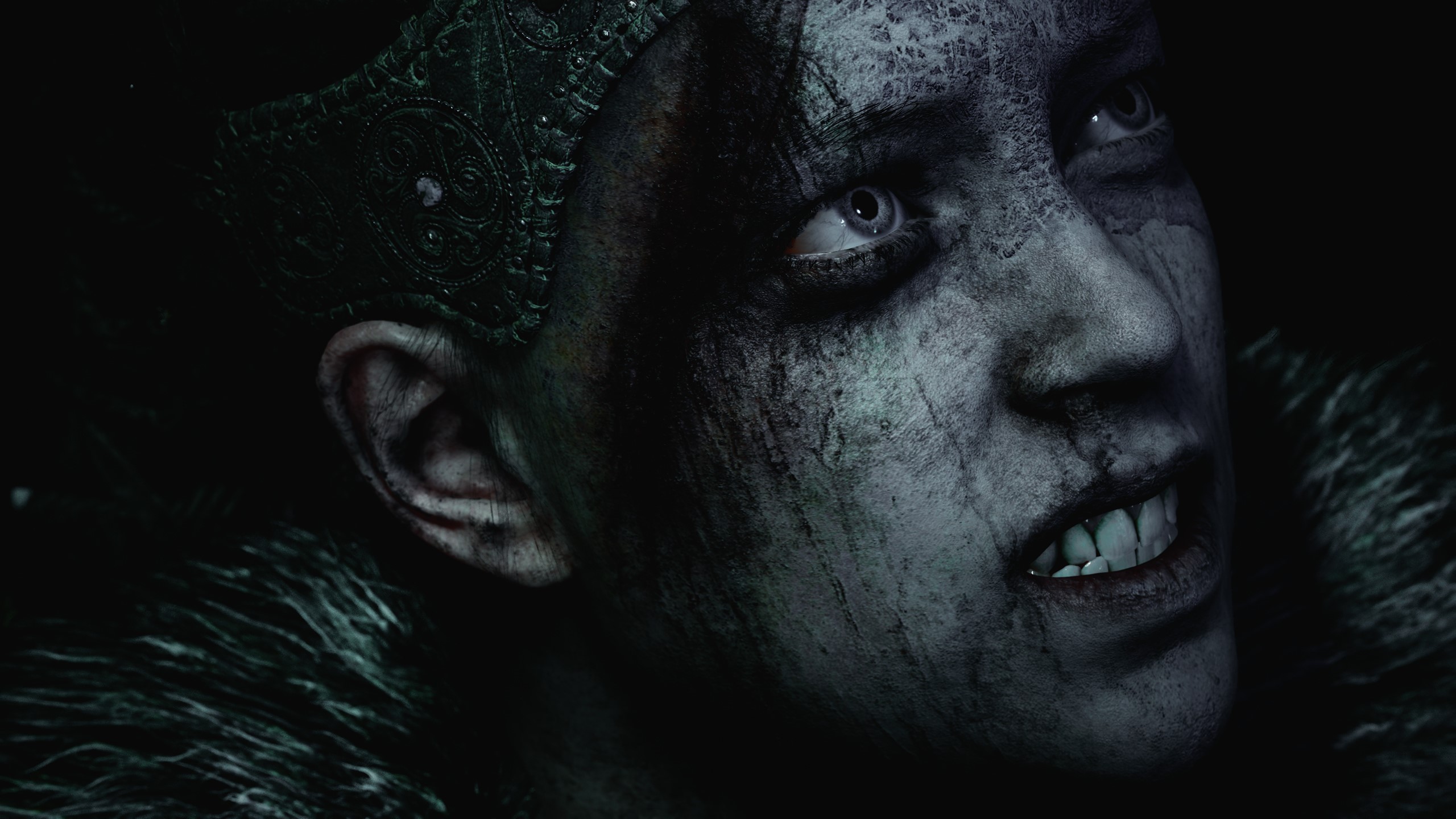Behind the Eyes of Elliot


# Phoenix and the Question of Perspective
## Or Behind the Eyes of Elliot
Preface: This essay I started to write after a dialogue about the right camera angle(s) to use and it was first meant as an article for our Phoenix documentation. I began with a comparison of the third person perspective in games with behind-the-back tracking shots in movies, but from there it evolved into more of a philosophical reflection. It may be obvious for you that we use third person in our project, but in our documents we also attempt to show why we do what we do. Why third person? Why may it be better for our purpose of making a radical immersive game?
If you want to make an immersive game, one of the most important things to ask will be, which (camera) perspective to choose. At the first glance, first person may seem best for this purpose, since you are the closest to the character; you actually are “inside” the character you play.
But if immersion would just mean that you experience something as if it were real, we would need to make a step towards VR, and then a step towards something beyond - until we would end up with something that is so real, that you cannot distinguish it from reality anymore and you will not know if you live your life or play a game. If you are awake or dreaming. Attempts like this will be made, they will experiment with this over time, with all the dystopian implications. But I personally doubt that this is a form of immersion worth striving for. Live life instead.
This is also strongly related to the degree of abstraction: If immersion would mean that the border between the player and the game vanishes as much as possible, then the graphics would need to be as realistic as possible too. But immersion does not equal identification.
Hellblade is very realistic in design and they surely consider it necessary for the story they want to tell: To show the emotions in Senua’s face. We could even argue that Senua’s face is the most important narrative means in their game. To this end you have to see her face often; the camera turns constantly around to show her emotions and mental struggles.
The face of Senua in Hellblade: Senua’s Sacrifice by Ninja Theory.
But whenever her face is shown and used to tell her story - you are not playing her, you’re watching an ingame cutscene. It’s part of the game, but not a part of the gameplay. It is a mixture of a game and a movie. And I am not talking cinematics here, I am talking about perspectives during play.
When we want to tell a story and choose a game as the tool and the form of art to convey it by, then it is because it enables us to differ from reality, to dive into fantasy, metaphor, allegory; like a book, but with pictures that move and in which you as the player make decisions, interact with the story, influence the outcome of the tale. Graphics does matter as a means to convey the desired vision and to express the art in the desired form, thereby helping the players to immerse themselves in a way suitable for the style chosen.
But he won’t be necessarily immersed more by “better” recognition of visuals because of more realistic textures, models or whatever - during actual gameplay. A game, just like a painting, is not an attempt to copy reality and I see no reason to strive for photorealism for reasons of expression.
The more depth and meaning you have, the less you need high-end graphics to distract the people from the lack of it. People promote their game with the realistic graphics they veil it into, by impressing people with technique instead of meaning. I see art not in improving graphics without an end, but in the ability to express just as much or more with less.
Beauty lies in simplicity, which inspires our fantasy much more than complex presentation. We try to make it as realistic as needed for what we attempt to express, but not more. Thus, we never ask what we can add, but how much we can reduce, without a loss in meaning.
 A Gothic Alpha screen as an example of oldschool graphics - by today’s standards.
A Gothic Alpha screen as an example of oldschool graphics - by today’s standards.
In programming you do the same. You write beautiful code if there is nothing left that you could take away. Then, everything there is has a meaning and needs to be there. Compact, powerful code.
When reading a book, you will be immersed into the story because you are able to imagine what you read. The abstraction is not that complex: You read the words, thereby unconsciously or consciously forming images in relation to them. You are not focused on the words, you are focused on the fantasy they inspire: The ideas inside. A book can be immersive.
A 3D game, just as a movie, delivers images by itself. Here too an abstraction is needed: There is no direct experience, there is the screen between you and your character, there is the keyboard between your fingers and the movements he performs. But the character reacts so directly that the abstraction remains fairly simple. It seems to happen through you while you focus completely on what you see: On what you are drawn into (in a movie), on what you seem to affect or what you are forced to react to (in a game).
It becomes more and more complex by adding layers of superficial covering (like unnecessary HUD elements and so on, as we discussed at other places in the documents), but it can be limited. This is what I call “simple abstraction”. By adding new layers to it, you will end up with a more and more superficial abstraction² or an abstraction³ and so on. The more layers of abstraction you have, the less direct the experience. This is what I consider as non-immersive game design.
Indeed you will feel less empathy with characters displayed as simple lines without a face, and much empathy with a character like Senua; in her design her face (or rather the face of the actress playing her) was the primary focus.
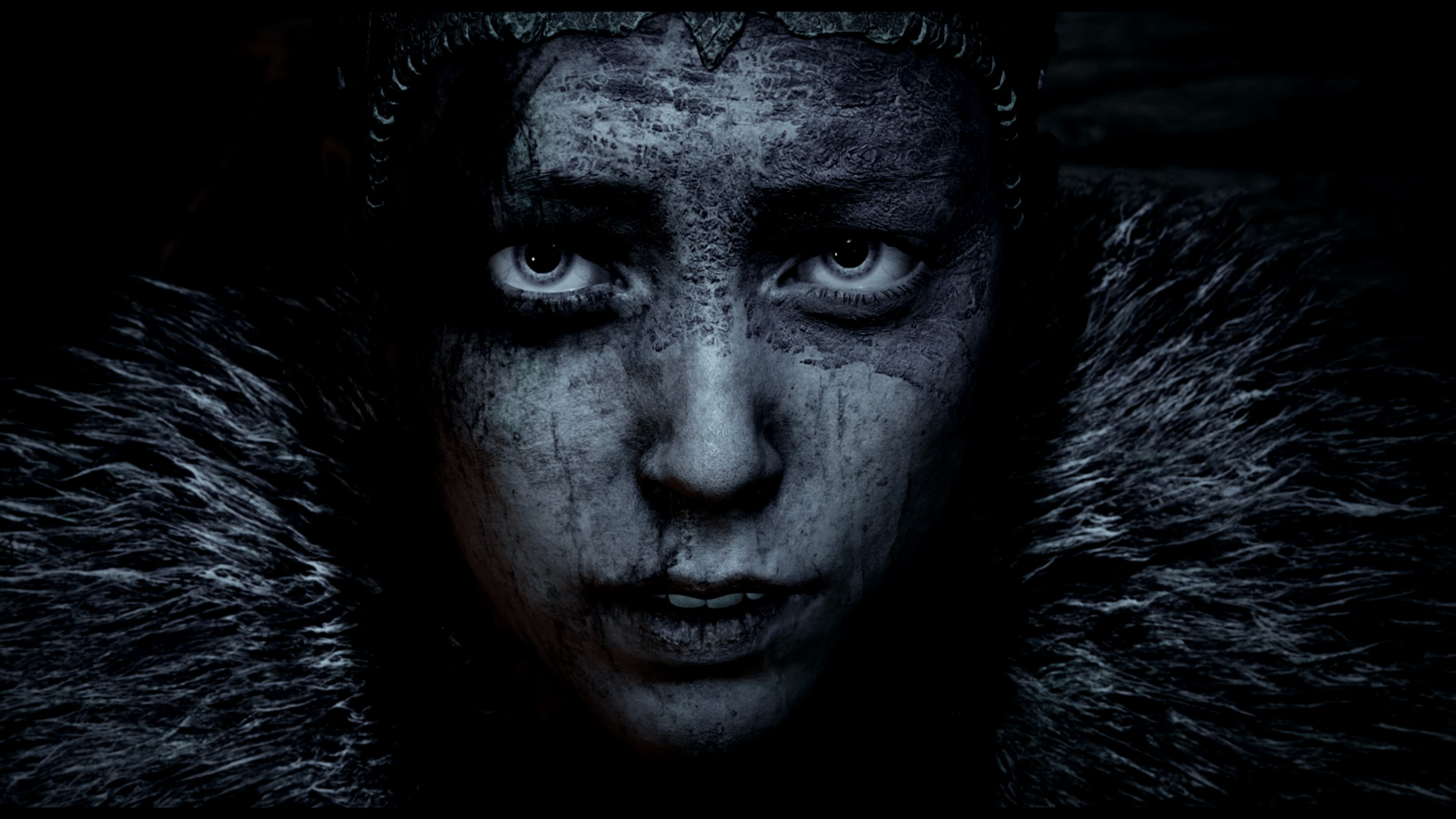
But the more realistic the graphic gets the less your fantasy must and will be able to do. Thus, the graphics that serves our specific purpose most, will represent a look that offers a subtle balance between abstract and realistic presentation:
And GOTHIC, as the basis of our project, offers that.
In a game, we move the pictures to touch the players. And what touches them more, how can they feel more connected? How can they identify more with the character which they play? When they are looking through the eyes of the protagonist, as in first person? Or when they can see him, as if they were the silent witnesses?
When you look at the third person camera from the perspective of a movie, it is basically a behind-the-back tracking shot, as it is used for dramaturgical reasons by directors such as Darren Aronofsky in The Fountain, “Black Swan” and basically all of his other movies.
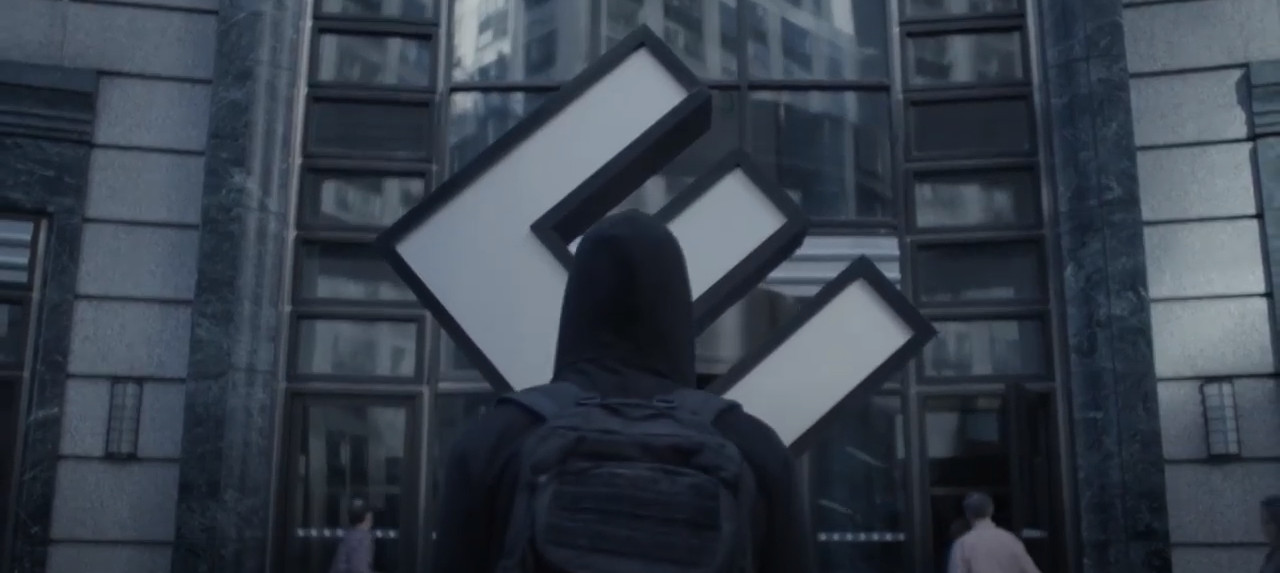 A behind the back shot of Elliot in Mr. Robot.
A behind the back shot of Elliot in Mr. Robot.
Someone did a video about how Aronofsky uses tracking shots like this. In his description he wrote:
“Darren Aronofsky seems to favour tracking shots that capture his characters from behind rather than the front or side […] Aronofsky makes us feel as if we are being dragged through a scene. These shots are most often employed when his characters are experiencing times of stress or disorder. As they journey blindly into the unknown, we are forced to follow them.”
First person, while being superficially closer, can not convey what we do everday: We observe ourselves. As if we’re witnessing our own body and mind; we imagine ourselves moving through the space we’re in; behaving like a witness. This is done in the movies.
Of course, you can make first person movies, too. And it is done at times. But it is not adapted as widely. Because telling a good story is not about being the character that you play or see. By placing you inside him you will be too close to see. When you want to tell his story, to experience him thoroughly and the challenges he faces, a distance can help, a distance can improve the immersion.
Senua’s Sacrifice uses third person for this reason, not first. It is all about getting into Senua’s mind and you can do so better by the distance they offer.
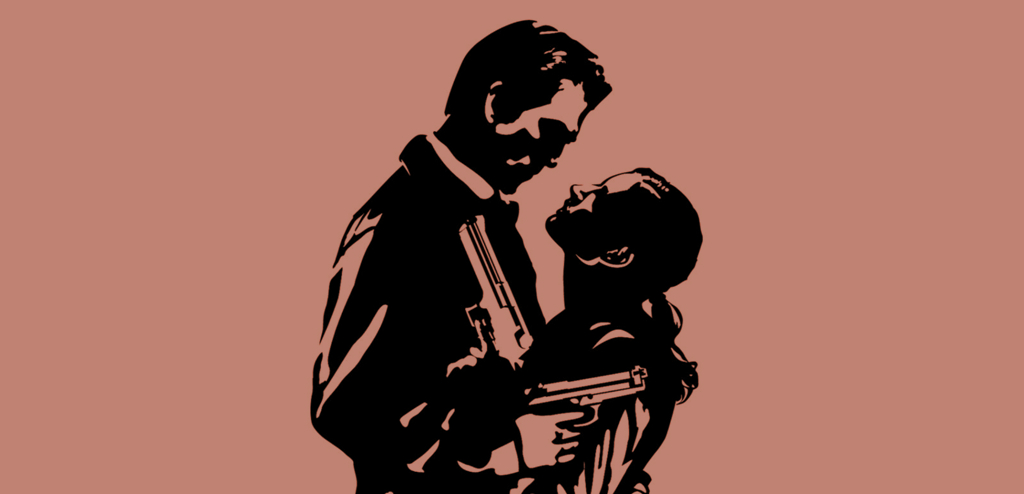
Max Payne 2 - A film noir love story
Just as if you face the girl you love. You won’t understand her, you won’t fall in love with her, if you cannot see her from outside. You need the distance that pulls you towards her. If there was no distance, there would be no desire.
You will actually know and experience more about her by having this degree of distance, just as you experience more about you, when you distance yourself from your thoughts and your deeds, assessing them as if you would differ: And you do. You are not your thoughts nor your deeds, at least not just that.
The character faces the monsters in first person, but what is he experiencing during that? This is what you will miss through the tunnel vision, that is the nature of the first person perspective. It is the vision that is letting you react, following your instincts, the ideal vision for shooters, but not necessarily the ideal vision to feel or to reflect.
From this perspective, the third person view may not just be the best fit for the immersion by visualisation that we want to achieve, but also a viable, if not the best choice for dramaturgy.
Then there is the distance of time. In first person, more than in any other perspective, you experience the events in the present. But when you tell a tale, it is never about the present. The present can be lived, not told; the tale, ideally, may help you finding back to the present, but it will always lack behind; just as you, following your character, like a camera following an actor.
If your character bleeds, in reality you would feel it; in first person you barely see it. It cannot convey the pain. In third person, you just show it.
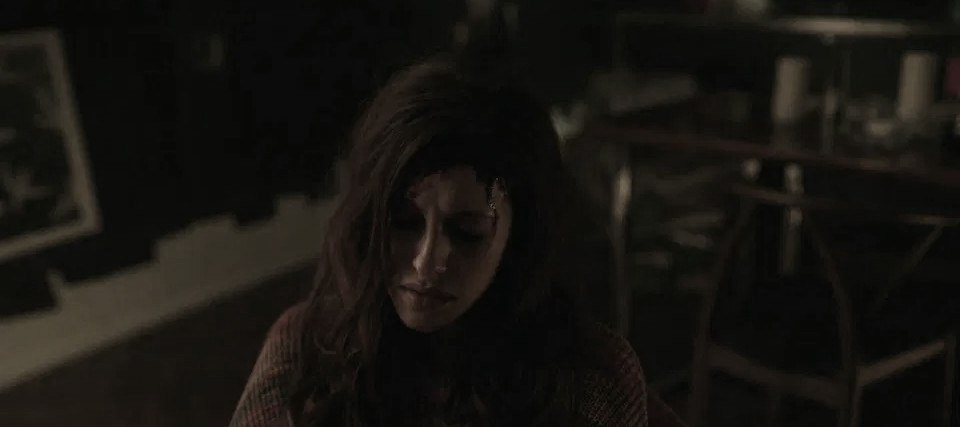 Darlene bleeding, Elliots sister in Mr. Robot by Sam Esmail.
Darlene bleeding, Elliots sister in Mr. Robot by Sam Esmail.
You are close to him, but not too close; so that you can feel with him, by displaying the effects he suffers from. Third person offers a distance that can let you feel more connected inspite of being further away from the character you play.
To summarise: I refuse the notion that first person would be the most immersive perspective per se. Often you’ll be more immersed, if the character is shown to you as if you’d be his witness, close to him, just as you witness yourself: By the image that you have from you.
Third person is a perspective that (1) enables us to convey the highest amount of immersion via visualisation, by displaying changes of the character directly on his body that you see. And it may be the perspective with (2) the most immersive dramaturgical effect.
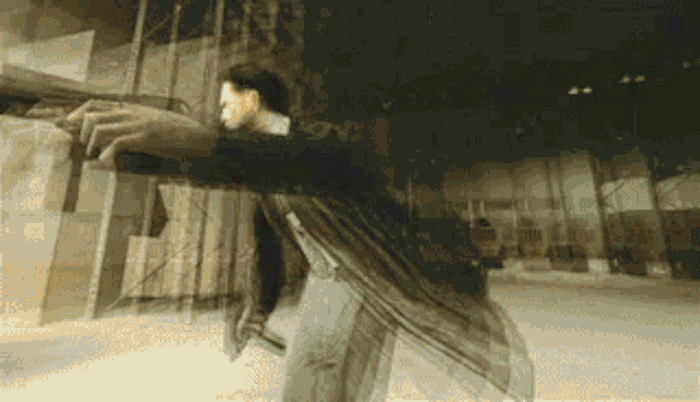
If you are forced to use just one of the two. No doubt, that it would be even better, if the camera itself would be used as and would become a means to convey desired changes in perspective, by using different perspectives in different moments in time or rather: in emotion. And for Gothic they had planned just that: To use a different perspective for exploration, a different perspective for fights, for specific areas in dungeons and so on.
To do this right though is the most difficult thing in designing a dynamic camera system. Nothing may be more tedious than to play a game that doesn’t allow you to control your character as you wish, because of some weird camera perspective at the wrong time; a problem, that is not present in the movies.
We should consider the work of those who design a camera system for a game as similar to what is done in movies by the director of photography. The position of the camera in a given moment will become part of the interactive motion picture that we draw, and should be considered an essential element of the immersion we strive for. It is an indivisible component in the toolbox of game design in general, that until now, I think is fairly overlooked.
Hellblade was an exception in this regard. But it is special to me not because of the great camera work during the cutscenes, but more so because of the camera work while you are in control. To move a camera for dramatical effect in a cutscene is not very difficult. But doing so while the player is in control, is an art in itself. In Hellblade they have used the camera to intensify the emotions that Senua is going through and giving you the same: You see and feel her fear and pressure in front of the enemies she faces.
So whenever I would want to tell a story, especially a character-driven one, I would choose third person for most parts of the game.
At this point I want to mention the story of a man, which is a showcase of this art: Elliot in Mr. Robot. SPOILER: In the following last passages until the end I speak about the ending of Mr. Robot; if you have not watched the series before you may want to stop reading here, unless you are sure that you will not watch it ever; but I would highly recommend to do so. Behind all its implausible exaggeration on its surface it surely is one of the most meaningful cinematic works I know.
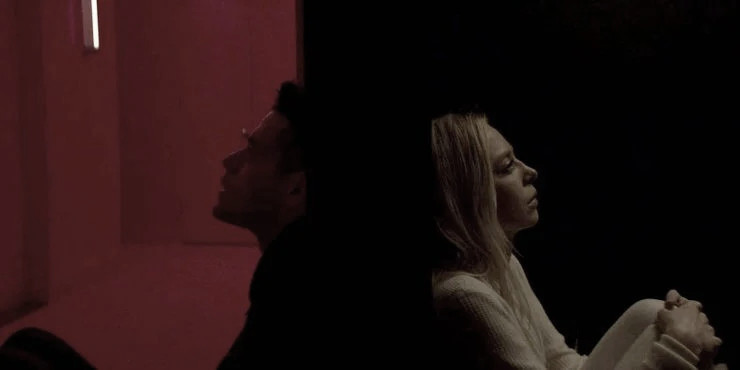
Elliot is displayed as a man with a personal identity disorder caused by traumatic events in his past. The viewer of the series himself becomes another part of Elliot’s personality, that he speaks to sometimes just as he speaks to other parts of himself; and thus they break the fourth wall exceptionally well.
At the end of the series, Elliot realises that all the time he was just another personality to protect him. He wakes up in a hospital and he makes this confession to his sister, that he is not the Elliot he thought. To his surprise, his sister knew and affirmed to him that she knew that he was not the “real version” of himself (whom to help she felt too helpless herself), before he fell asleep again.
In the following dream he is able to dissolve his divided personality back into one, integrate himself, which they display by them watching a movie, looking at the screen; the camera is moving into the projector, out of which all the images get thrown; the camera slowly moves into the light of the projector, as if you would die and you see all these images of his life passing by: The single parts of his personality, that he created to survive, dissolve into this, die within him.
And as soon as the camera reaches the projector, the light transforms into his eye, from which a tear is running down. Thereby they convey, that with this death, this dissolving of his single parts into one, he recognised himself as this again and in that moment of him recognising himself, he looks directly into the camera, into the screen. To you. What he realises is You.

And as soon as he recognises himself as this - what is beyond the screen of the characters he himself has created to survive, to conceal the truth (while being unable to deal with the trauma), the perspective suddenly switches; and, I may be wrong, but I believe for the first time in the whole series - first person is used.
A metaphor for the dream we all live in without realising it, because we identify ourselves with the content of the screen or the screen itself, while what we really are may lay beyond, hidden by ourselves to protect us, to conceal something from us that we are not ready to see. This is beauty. This is art. And this is what you can do by using perspectives consciously. As we try with our story around the magical barrier and the sleeping demon deep below.
This moment of being inside Elliot in first person instead of being an unconscious part of his personality (for him) somewhere inside his head that is witnessing him in third, is the last scene of the whole work. Here, first person has a meaning. It wouldn’t have, if randomly used before, nor would you have been able to feel with him like you do.
And in this first person realisation, in this last scene, his sister Darlene comes close to him. She looks at him and recognises the change right away. And as if she knew (since she does) that she is speaking to someone else now, she says: …
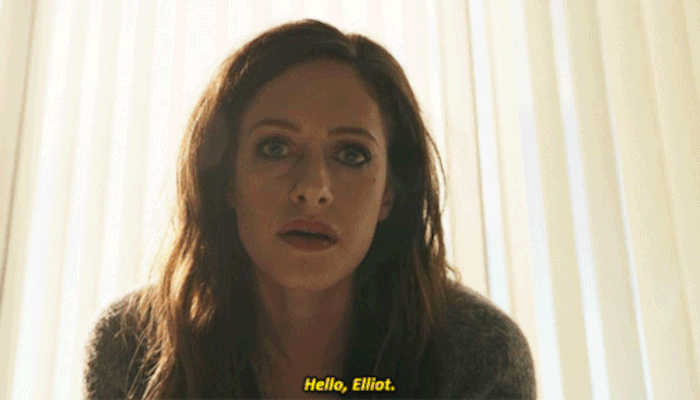
The last thing you see is Darlene’s face, seeing Elliot as what he really is, as one and integral, seeing you, as if you became one with him, just as the other parts of his personality - and he became one with you.
You in front of the screen, beyond the division. She looks at him and speaks to him and you at the same time. And just as his divided personality, the series itself dissolves into the reality beyond (into yours), and the only thing left is you in front of the screen, behind the eyes of Elliot.

Florian aka flosha - March 30, 2021
Links
Support
If you want to support me and PhoenixTales and give something in return for the work on Phoenix, the Gothic Archive, our Phoenix Documentation or Essays like this one, you can do so via ko-fi.
